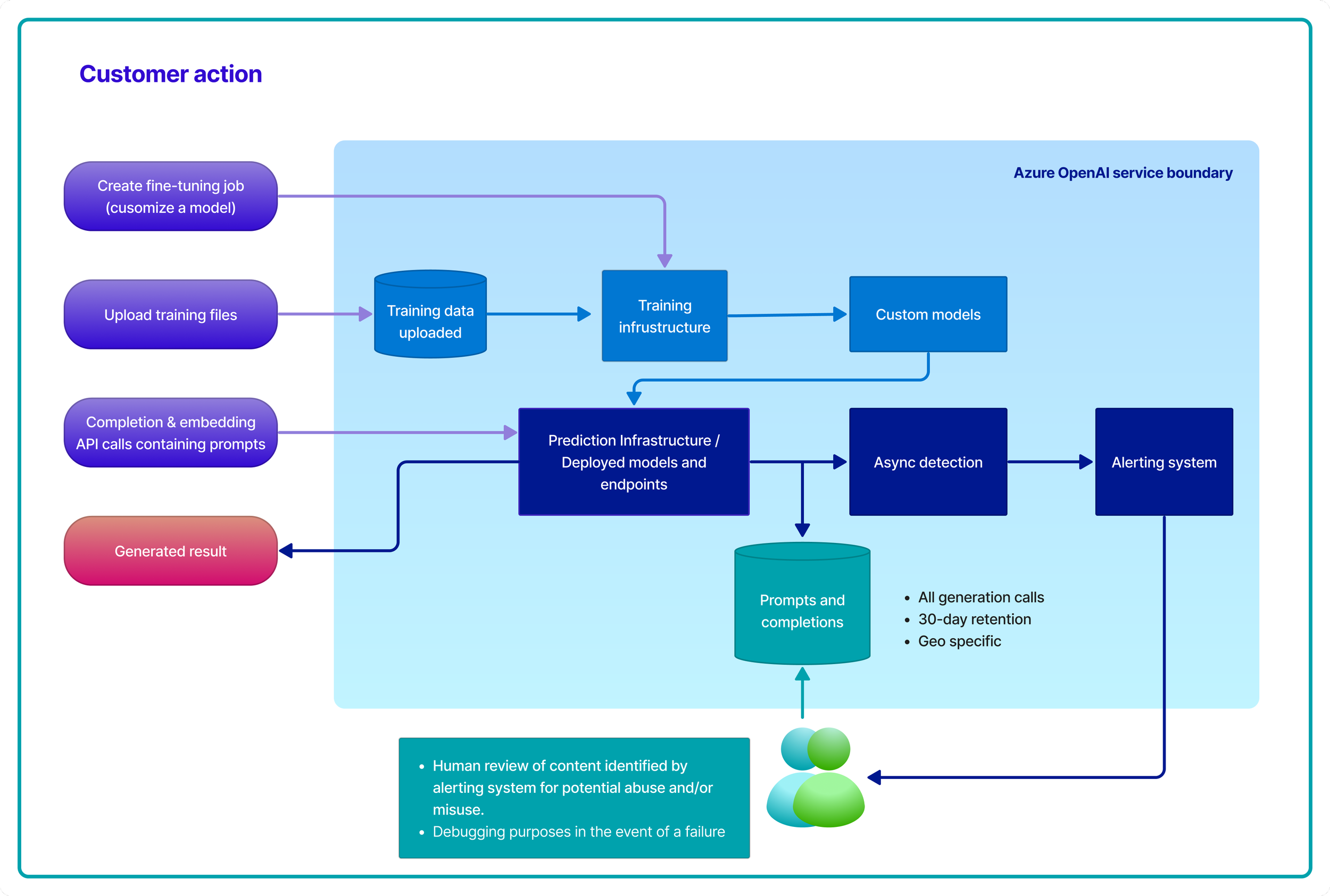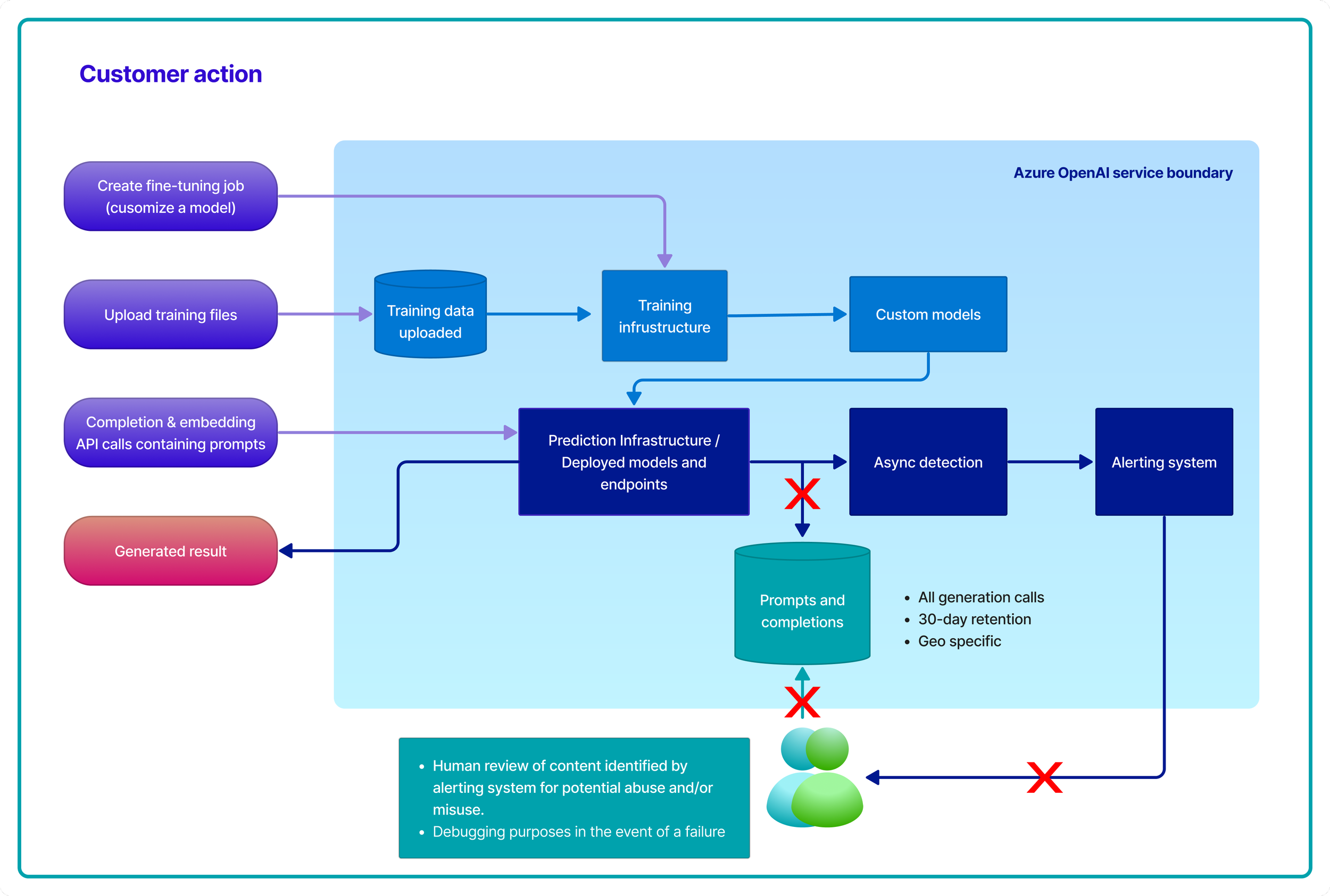Azure OpenAI vs OpenAI: What's the Difference?
Written by Gavita Regunath and Anna Wykes
TL;DR: Azure OpenAI Service provides a safe and reliable way to access cutting-edge language AI models like OpenAI GPT, Codex, and DALL-E in the Azure ecosystem while safeguarding customer data. If you want to use these OpenAI models and protect your data, Azure OpenAI is the ideal solution. The key differences between OpenAI and Azure OpenAI will be discussed later in this blog.
Are you curious about the differences between OpenAI and Azure OpenAI? It's a question we get asked often, and we want to provide you with a closer look at the similarities and differences between these two cutting-edge technologies. So, let's dive in and explore the distinction between OpenAI and Azure OpenAI.
What is OpenAI?
I'm sure by now you've heard of the famous and exciting ChatGPT which is a product of OpenAI, a leading research laboratory focused on developing safe and beneficial AI. They've produced some of the most advanced AI models to date, including GPT-4, which can understand and generate human-like language. If you want to find out more about OpenAI and it models such as GPT-4,Dall-E, Whisper, ChatGPT and more, then the following are links to OpenAI’s models:
ChatGPT, a large language model trained by OpenAI, Try ChatGPT: https://chat.openai.com/
GPT-4, OpenAI’s most advanced system, producing safer and more useful responses. Note though that to try this out, you need a subscription to OpenAI's ChatGPT Plus program for $20 per month.
GPT-3.5, the current state-of-the-art language model from OpenAI that models that can understand as well as generate natural language or code.
Whisper, an automatic speech recognition system from OpenAI that can transcribe and translate multiple languages.
DALL·E, OpenAI's image generation model. Try Dall-E: https://labs.openai.com/
CLIP, an AI model that can understand images and text together.
MuseNet, an AI model that can generate music in various styles and genres.
Jukebox, an AI model that can generate music with lyrics and singing. Try Jukebox: https://jukebox.openai.com/
OpenAI's research focuses on a wide variety of AI applications, from natural language processing to speech and beyond. Their work is aimed at solving some of the most pressing challenges in AI development, while also ensuring that these technologies are developed in a way that's safe and beneficial for everyone.
So whether you're an AI researcher, developer, or enthusiast, OpenAI is definitely an organisation to keep an eye on. With their cutting-edge research and commitment to responsible AI development, they're helping to shape the future of technology in exciting and meaningful ways.
OpenAI and Microsoft
Azure OpenAI is a partnership between Microsoft and OpenAI, which means it's like the ultimate power couple in the tech world! By joining forces, Microsoft brings its powerful cloud computing resources to the table, while OpenAI brings its impressive knowledge and skills in AI. With this partnership, they're tackling some seriously tough challenges and creating some seriously smart solutions.
However, Microsoft is still carefully gating access to ensure that projects comply with its ethical AI usage policies and are closely tailored to specific use cases. To access Azure OpenAI, you also need to be a direct Microsoft customer. Request Access to Azure OpenAI Service here.
The picture below shows how data is processed within Azure OpenAI. This diagram covers three different types of processing:
1. How Azure OpenAI customises a model by using your training data, also known as creating a fine-tuned or custom model.
Azure OpenAI provides customers with the ability to upload training data using the Files API. The uploaded data is then stored in Azure Storage, encrypted by Microsoft Managed keys, and isolated with the customer's Azure subscription and API credentials. Users can also delete their uploaded files via the DELETE API operation.
2. How Azure OpenAI performs text prompt processing to produce completion and embedding outcomes.
The Fine-tunes API allows customers to fine-tune OpenAI models using their uploaded training data, and the resulting fine-tuned models are also stored in Azure Storage, encrypted, and logically isolated with the user's subscription and credentials. These models can also be deleted using the DELETE API operation.
3. How Azure OpenAI, in collaboration with Microsoft personnel, examines prompts and completions to detect instances of abuse, misuse, or the creation of harmful content.
Prompts and completions data may be temporarily stored by the Azure OpenAI for up to 30 days in the same region as the resource, see Figure 1. This data is encrypted and accessible only to authorised Microsoft employees for debugging and investigating patterns of abuse and misuse. However, if a customer is approved for modified abuse monitoring, the prompts and completions data are not stored, and Microsoft employees cannot access the data, see Figure 2, ensuring businesses can confidently leverage advanced AI capabilities while maintaining control over their data privacy.
Figure 1: How data is processed normally
Figure 2: How data is processed if Microsoft approves a customer's request to modify abuse monitoring
One of the key benefits of Azure OpenAI is its seamless integration with other Cognitive services within Microsoft Azure. This means that businesses and developers can easily integrate their AI applications with other Microsoft Azure services, such as Azure Data Lake Storage or services offered by Cognitive Services. This integration allows for greater flexibility and control over how data is processed and analysed, making it easier to build intelligent applications that can process large amounts of data.
What’s the hype with OpenAI models?
OpenAI has generated a lot of hype and excitement due to its ground-breaking work in the field of artificial intelligence (AI). They're creating some of the most advanced and sophisticated AI systems out there, and their research is pushing the boundaries of what we thought was possible. Thanks to OpenAI, we're seeing some real breakthroughs in areas like natural language processing. It's no surprise that people are eagerly anticipating what they'll come up with next.
Among their ground-breaking AI models, OpenAI's GPT-3 and GPT-4 models generates human-like language that's difficult to distinguish from language generated by humans. This model has enormous implications for natural language processing, chatbots, and other AI-driven applications. Meanwhile, their DALL-E model is capable of generating highly detailed, realistic images from textual descriptions, opening up exciting possibilities for creative industries such as advertising and design. Additionally, Codex assists developers in writing code more efficiently, potentially revolutionizing the software development process. It's clear that OpenAI is making significant contributions to the world of AI and technology, and the possibilities for the future are endless.
Understanding the Key Distinctions: Comparing Azure OpenAI and OpenAI
We've put together a handy table summarising the key distinctions between these two advanced AI technologies. At the time of writing this article, the following distinctions are summarised in the table below.
1Check out the Introduction to Azure OpenAI training course
2See the support options for Azure Cognitive Services
3See the OpenAI FAQs for confirmation of how data is stored
4Check out the Cognitive Services section of the Service Level Agreements (SLA) for Online Services page
5For the latest state of OpenAI’s operational systems, see the OpenAI Status page
6Explore the regional availability for Azure OpenAI Service
7See supported countries and territories for OpenAI models
WRAPPING UP
Overall, Azure OpenAI is a service that offers advanced language AI with OpenAI models while providing the security and enterprise promise of Azure. It is co-developed by Microsoft and OpenAI, ensuring compatibility and a smooth transition between the two. Azure OpenAI also supports VNETs and private endpoints and allows for new use cases to be added through a limited access process. On the other hand, OpenAI is a research organisation focused on advancing artificial intelligence in a safe and beneficial manner. While OpenAI does not offer the security and enterprise promise of Azure, it does provide comprehensive data privacy policies and learning resources.
For those beginning their exploration of cutting-edge OpenAI models, OpenAI is an excellent starting point. However, for enterprise implementation, Azure OpenAI is the more suitable choice.





